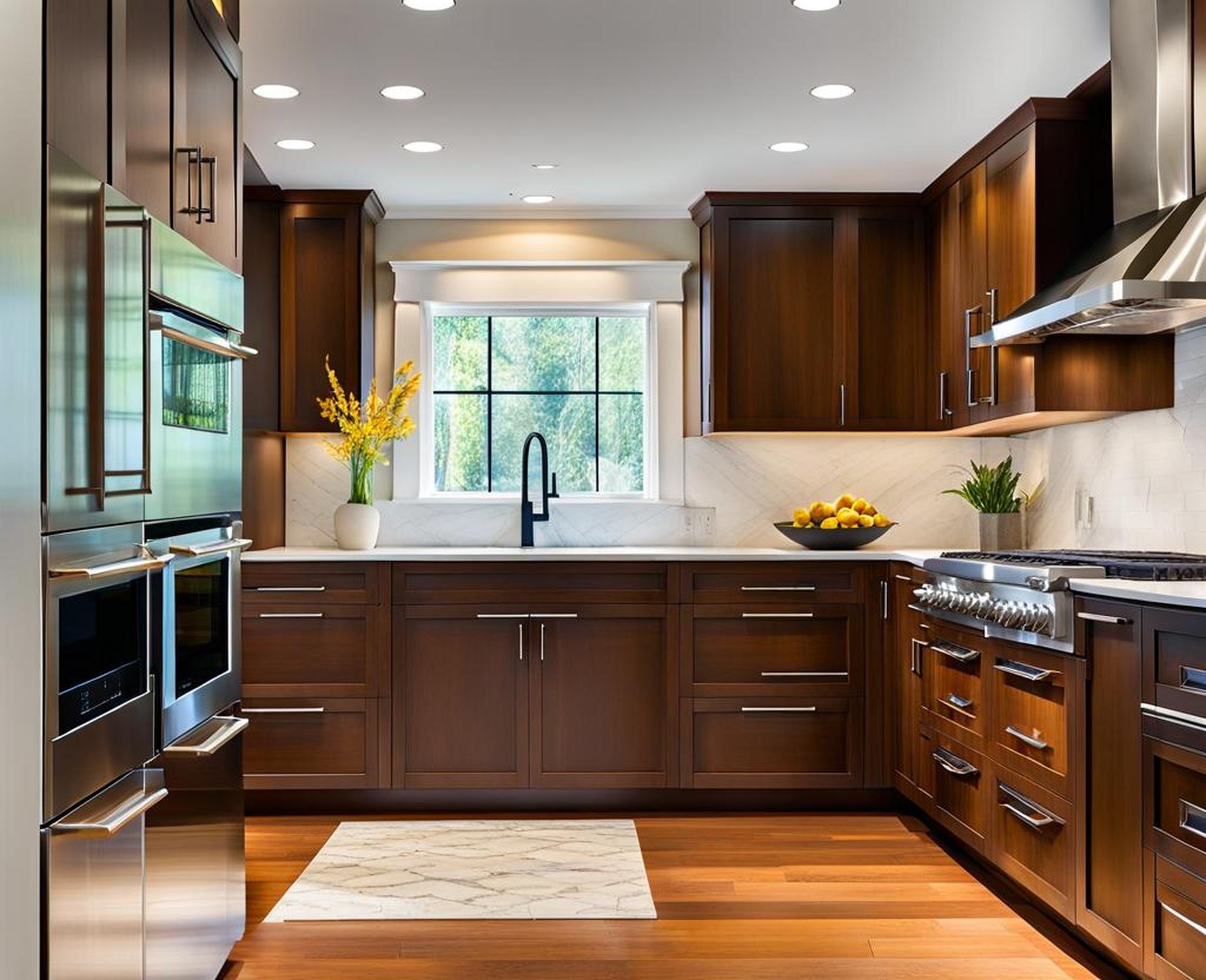Kitchen cabinets represent one of the most important elements in kitchen design. Not only do they provide essential storage space, but they also make a major stylistic impact.
When planning a kitchen overhaul or remodel, one of the key cabinet decisions is whether to opt for framed or frameless cabinet construction. What sets them apart, and which should you choose for your space?
Defining Framed vs. Frameless Cabinets
The core difference comes down to the basic cabinet structure:
- Framed cabinets feature a supporting frame made of hardwood that surrounds the storage box. This creates an overall thicker cabinet with added stability and durability.
- Frameless cabinets do not have a frame around the perimeter. This allows for slightly thinner cabinet walls and more usable interior storage capacity.
| Framed Cabinets | Frameless Cabinets |
| – Hardwood frame around box | – No frame around box |
| – More classic aesthetic | – Sleek, contemporary aesthetic |
| – Offers sturdy structure | – Maximizes interior space |
Appearance and Design
Framed cabinets tend to have a more versatile, traditional look that fits well with many design aesthetics from classic to contemporary. The visible face frame even allows for customized decorative trim options.
Meanwhile, the sleek, frameless construction of European-style cabinets caters to a more contemporary, minimalist aesthetic. The clean lines and lack of visible frame promote a lighter, uncluttered look. This allows frameless cabinets to better blend in seamlessly with modern kitchen designs.
Customization Capabilities
In terms of customization flexibility, framed cabinets offer greater versatility. The supportive frame can be adjusted to accommodate specialized storage needs or unique kitchen layouts. Frameless cabinets provide less flexibility for adjustments, instead relying on precise measurements for a perfect fit.

Storage Capacity and Accessibility
The main advantage of frameless cabinets lies in maximum interior storage space. Without a bulky frame taking up room, frameless cabinets can hold more contents with full access. This allows features like full-extension drawers even in base cabinetry.
Framed cabinets still offer usable storage, but some capacity is compromised by the frame. However, specialized organizers and customized inner fittings can help maximize storage efficiency regardless of construction style.
Deep Storage Access
Frameless cabinets also excel at providing complete access to contents, since the lack of interior frame allows you to fully utilize all depth storage. The unobstructed cabinet box design is especially useful for deep base drawers and corner cabinet storage solutions.
Durability and Structural Integrity
The reinforced structure of a sturdy hardwood face frame offers framed cabinets increased stability and weight-bearing capabilities. This durability provides great support in high-traffic areas like around a kitchen sink or range.
Quality frameless cabinets can stand on their own without a frame, but they lack supplementary stability, making them more prone to sagging over time. However, sturdy build materials help promote longevity regardless of cabinet style.
Uneven Wall Compensation
Framed cabinets also have an advantage when dealing with flawed wall surfaces. The sturdy frame helps bridge any slight gaps, allowing cabinets to hang straight despite uneven walls. Precisely constructed frameless cabinets require perfectly smooth installation surfaces to avoid alignment issues.
Installation and Fitting Factors
The process of installing cabinets varies greatly between framed and frameless. Framed cabinets allow for more flexibility in terms of fit. The supportive structure and trim options help adjustable cabinets accommodate imperfect measurements and placements.
In contrast, frameless cabinets demand precise installation. Without a frame to hide alignment issues, each cabinet must fit flush against the next with seamless transitions. This precision helps achieve the smooth, unbroken lines of frameless designs but allows little margin for error.
Expertise Requirements
Factor in the level of carpentry expertise needed for your cabinet installation as well. Frameless cabinets often require specialist cabinet makers familiar with the specialty hardware and zero-tolerance nature of frameless construction. Consider sourcing an installer qualified in your chosen cabinet style.
Cost Considerations
As a general guideline, typical stock or semi-custom framed and frameless cabinets fall within a similar mid-range price point. However, several factors can cause the costs to diverge.
Custom framed cabinets tend to carry a higher price tag due to the materials, construction intricacies, and precision engineering involved. Heavily customized frameless cabinets also increase in cost as you move beyond stock sizes into specialty solutions.
Unique storage configurations for awkward kitchen spaces often push framed cabinets into luxury territory. On the other hand, flawless frameless installation demands greater time, skill, and possible shim adjustments that hike up labor costs.
Making Your Choice
With all these considerations at play, focus first on which style best suits your functional needs and design aesthetics. Assess your layout restrictions, must-have features, and visual style preferences.
Factor in your budget flexibility as well. Custom framed cabinets promote visual interest for those willing to splurge. Cost-conscious minimalists may appreciate reliable frameless stock designs instead.
Your lifestyle can also impact the decision. If you anticipate heavy use and traffic flow around certain cabinets, durable framed designs provide reliably sturdy storage. Frameless construction favors precise but gentle use for optimal longevity.
Bringing It Together
For the most informed decision, have an expert kitchen designer map out recommendations for your unique space. They can advise the best style and layout for your goals, propose solutions to storage shortfalls or awkward corners, and ensure a cohesive finished look.
With some thoughtful planning during the design process, both framed and frameless cabinets can check the boxes for functional storage and aesthetically pleasing good looks.
When deciding between framed versus frameless cabinets, weigh your priorities in terms of storage needs, installation factors, preferred design styles, and budget. Consider lifestyle patterns and anticipated kitchen use as well.
Framed cabinets promote versatile design with enhanced durability but compromise some interior room. Frameless cabinets offer a sleek, contemporary look maximizing smooth lines and usable space access instead.
Upfront planning with an experienced kitchen designer can help you determine whether durable framed or spacious frameless construction best fits your kitchen vision.
